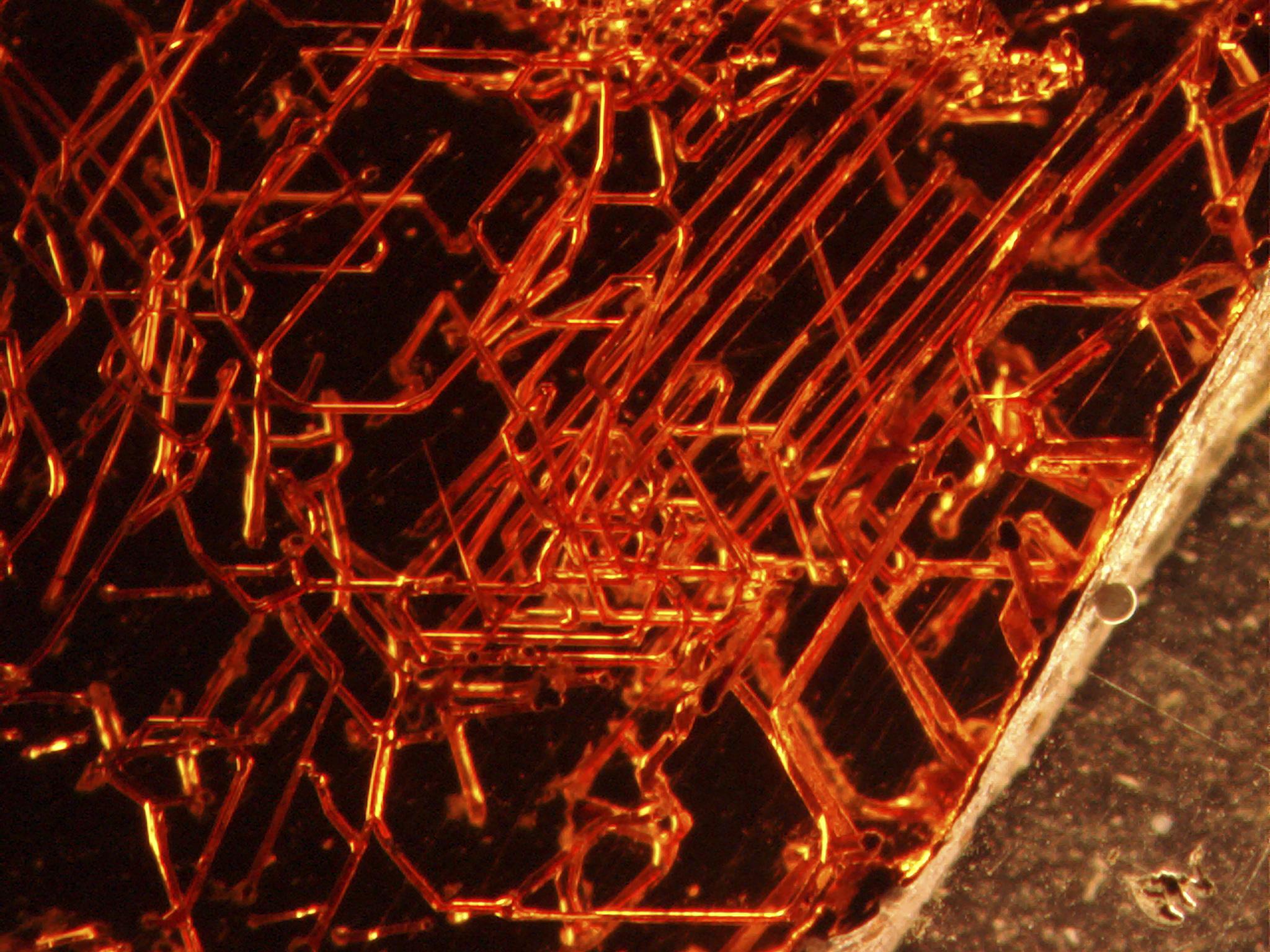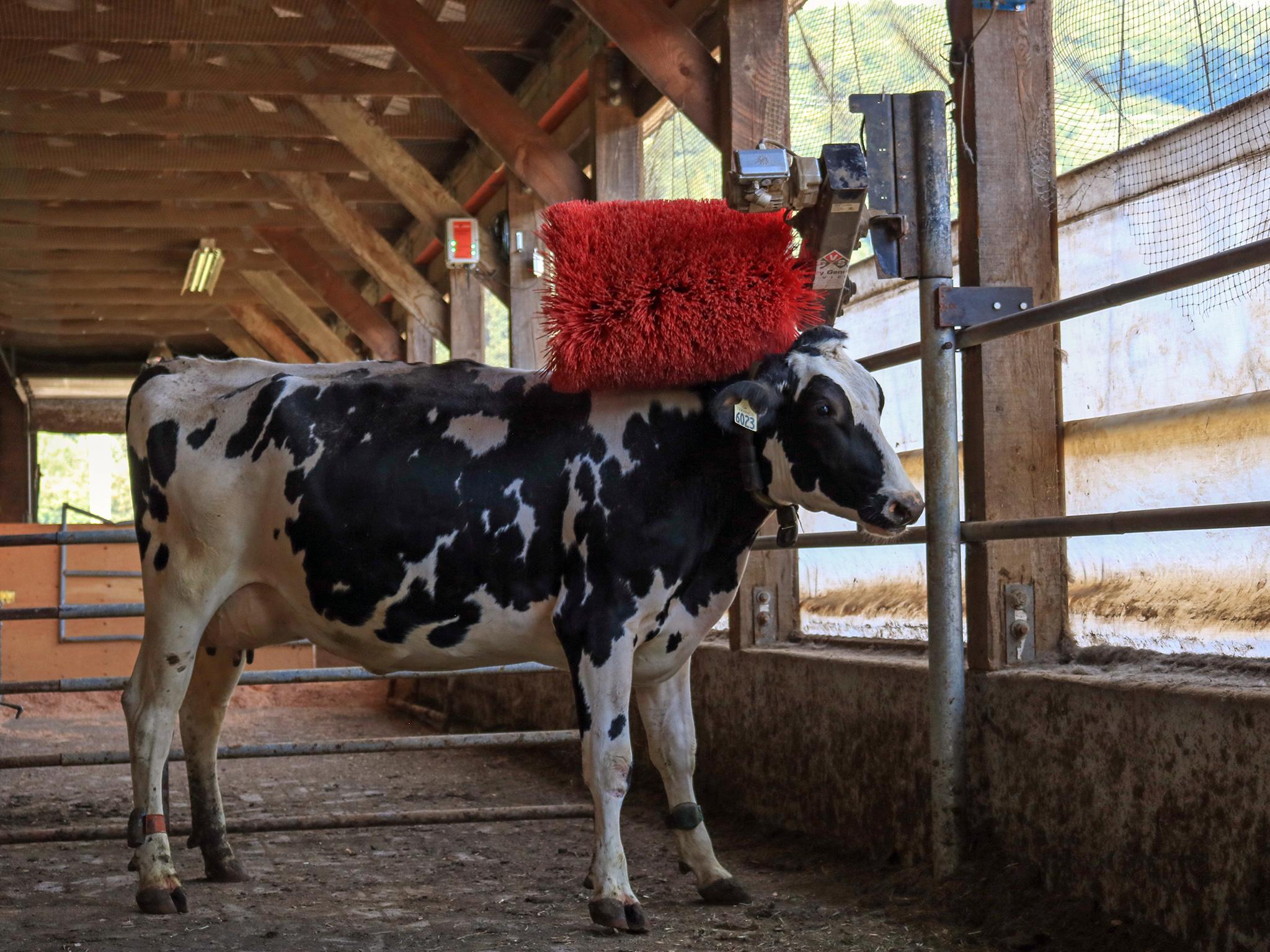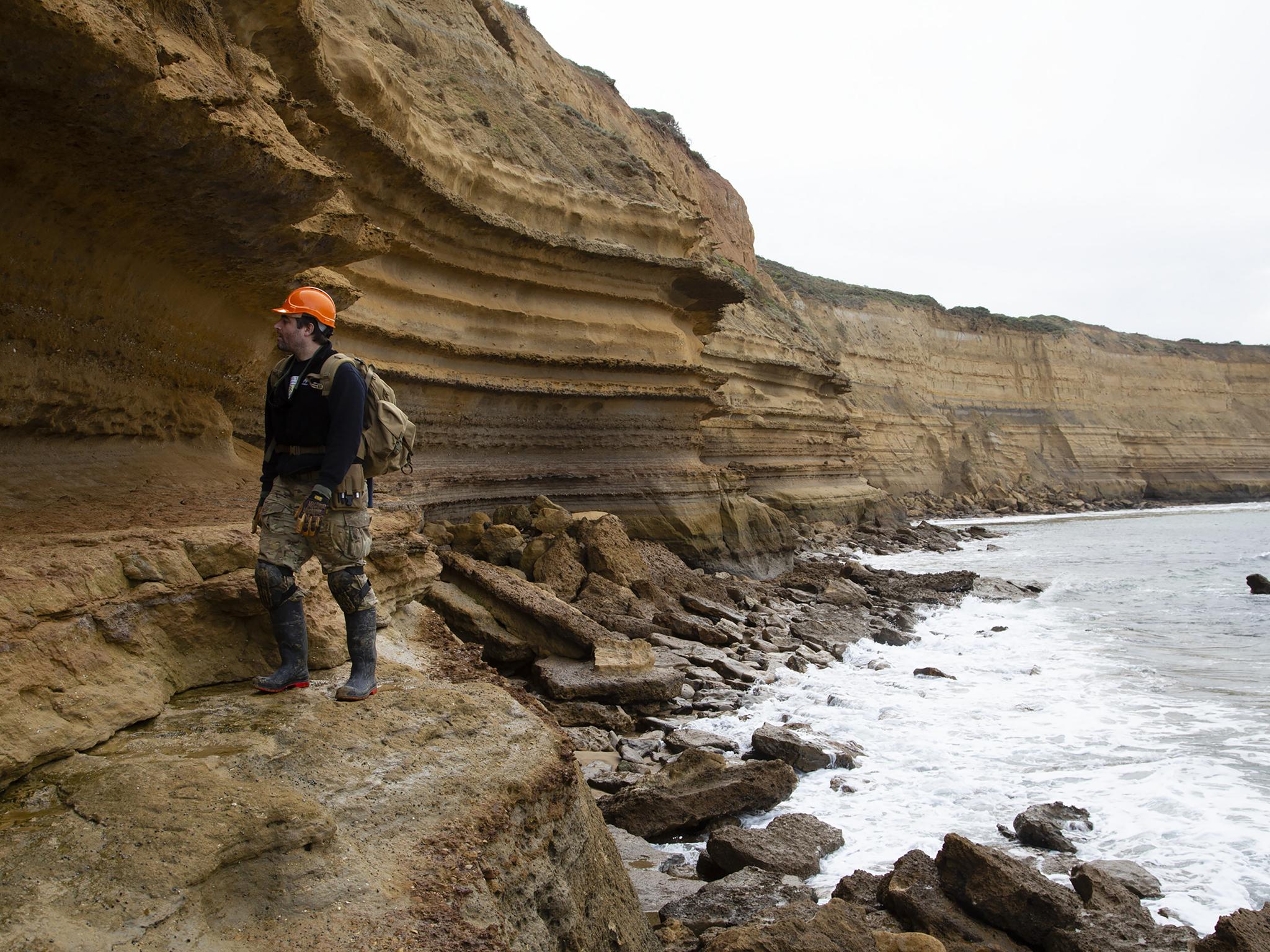Science news in brief: Megatoothed sharks and inside a leech
And a roundup of other stories from around the world

Your support helps us to tell the story
From reproductive rights to climate change to Big Tech, The Independent is on the ground when the story is developing. Whether it's investigating the financials of Elon Musk's pro-Trump PAC or producing our latest documentary, 'The A Word', which shines a light on the American women fighting for reproductive rights, we know how important it is to parse out the facts from the messaging.
At such a critical moment in US history, we need reporters on the ground. Your donation allows us to keep sending journalists to speak to both sides of the story.
The Independent is trusted by Americans across the entire political spectrum. And unlike many other quality news outlets, we choose not to lock Americans out of our reporting and analysis with paywalls. We believe quality journalism should be available to everyone, paid for by those who can afford it.
Your support makes all the difference.Something digs intricate tunnels in some precious gems – and it may be alive
Deep red garnets are found all over the world, from Thailand and Sri Lanka to the Adirondacks. They’re even the state gem of New York.
The stones that make their way into rings and necklaces must have a flawless interior. But sometimes garnets are marred with intricate traceries of microscopic tunnels. When Magnus Ivarsson, a geobiologist at the Swedish Museum of Natural History, first saw these tunnels, he wondered what could be making them.
After Ivarsson and his colleagues travelled to Thailand, they found that an assortment of evidence contradicted standard geological explanations for how the cavities might be formed. In a paper in PLOS One, the researchers are floating a new hypothesis: Perhaps what’s making the tunnels is alive.
The researchers looked for alternative explanations. One of the most promising was that grains of another stone wore their way through the garnet. However, the mineral doing the tunnelling must be harder than the surrounding substance, and garnets happen to be very, very hard. About the only things that could do that to garnet are diamonds or sapphires. But those aren’t present in significant quantities where these garnets were found, says Ivarsson.
Furthermore, the tunnels branch and connect with one another in a very unusual pattern, looking a bit like the structures made by some kinds of single-celled fungus colonies. When the researchers cracked the garnets open, they tested the insides of the tunnels and found signs of fatty acids and other lipids, potential indicators of life.
It’s not unheard of for microorganisms to live in rocks – endoliths, as such creatures are called, have been found living encased within sandstone in the Dry Valleys of Antarctica, among other places.
At the moment, the researchers’ best guess for the origins of the tunnels goes like this: At first, normal wear-and-tear on the surface of a garnet creates divots. Microorganisms, probably fungi, can colonise these hollows. Then, if the stone is the best nearby source for certain nutrients, such as iron, perhaps they use an as-yet mysterious chemical reaction to burrow deeper, harvesting sustenance as they go.
“I think there’s a two-step process, a superficial weathering, then an organism takes over,” Ivarsson says.
The stuff that helps leeches get their fill of blood
Go for a swim in the wrong shallow lake, and you’ll emerge covered in sleek black bloodsuckers that have decided you’re their next meal.
But inside a leech, fascinating things are happening.
The slimy creatures manufacture a wide portfolio of substances that help keep blood flowing once they have attached themselves to a host. They don’t just latch on to you – they pump out anticoagulants that prevent the wounds they create from clotting too quickly. How else are they going to get their fill?
And once they have sucked your blood, they can consume many times their own body weight in one sitting – or rather, sucking. Leeches must also keep the blood from solidifying in their own digestive tract long after they have let go of their host.
“We’ve had leeches that can live off a single blood meal for a year,” says Michael Tessler, a researcher at the American Museum of Natural History who is a co-author of a recent paper on leeches in the Journal of Parasitology, which focused on the anticoagulant genes in leeches’ salivary organs.
Medicinal leeches, which have minuscule jaws and which doctors may use to keep blood flowing in the treatment of injuries that might otherwise lead to amputation, have been examined like this before. But Tessler and his colleagues chose eight less-studied types of marine leeches that can feed on creatures like turtles, fish and even sharks.
The researchers collected the leeches’ salivary organs and looked to see what genes were active, and compared the sequences to a database of known anticoagulants to make their identifications. In each of the species they looked at, they found an average of 43 different genes for anticoagulant substances at work. They were surprised to find that despite the leeches’ differing taste in hosts, they made many of the same anticoagulants.
The team had thought that perhaps leeches feeding on turtles and sharks would be very different, Tessler says, but that was not the case.
One substance, called destabilase, particularly intrigued the researchers because it is also common in the jawed leeches, which are a more recently evolved group.
The fact that both of these branches have the substance helps support the idea that eating blood is an ancient feature of leeches rather than a new development.
Give a cow a brush, and watch it scratch that itch

Cows, like dogs and people, like a good scratch. Outside, they’ll rub their bodies against fence posts or trees to remove parasites or just stay clean.
But many dairy cows in the United States never go to pasture. And even when they do, cows may spend winters tied up in a barn. So if a cow has an itch to scratch – what’s a cow to do?
In a lot of places, nothing.
But in some places, there’s the mechanical brush.
This bristly, swivelling, motorised apparatus spins when a cow touches it, allowing the animal to reach places it couldn’t on its own. On average, cows will spend seven minutes a day rubbing their heads, necks and backs on these bulky body buffers. And some researchers think these mechanical brushes aren’t just some spa amenity for dairy cows – they’re important to the animal’s well-being.
“We have no idea how these cows think,” says Marina von Keyserlingk, who studies animal welfare at the University of British Columbia in Canada. “But what we do know is that she’s highly motivated to brush. And what happens if she can’t?”
Testing the animals’ willingness to work for access to fresh feed, mechanical brushes and empty space, von Keyserlingk and her team trained pregnant, healthy, indoor dairy cows to open a weighted gate. By looking at how much weight they were willing to push before giving up, the researchers got an idea of the relative importance of each resource to the cows.
The researchers suspected the brush would come in second for hungry cows. But the cows worked just as hard for the brush as fresh food. Their results, published recently in Biology Letters, suggest that a cow may need mechanical brushes for grooming indoors and that dairy farmers should consider having these in their barns.
The brushes may benefit farmers by keeping cows from destroying surfaces inside barns and pleasing consumers who increasingly want to know that the animals are healthy and, more important, happy.
For the cows, using mechanical brushes may ward off parasitic outbreaks, scratch itches and remove dead skin. But grooming also helps many species – perhaps including cows – cope with stress.
A fish impatient for motherhood
Killifish are a family of freshwater fish that have evolved to survive in the most difficult of situations. In the United States, for instance, the Atlantic killifish is known for having adapted to live in heavily polluted places such as the Lower Passaic River in New Jersey.
But in small murky puddles that come after heavy rains in parts of East Africa, another killifish, called Nothobranchius furzeri, or the African annual fish, has developed its own unique adaptations to its environment. Its embryos are able to enter a state of diapause, similar to hibernation in bears, when conditions aren’t right.
It turns out that entering dormancy isn’t the only thing that’s unusual about this African killifish. In a paper published recently in Current Biology, a team of Czech researchers report that N furzeri has the quickest known rate of sexual maturity of any vertebrate – approximately two weeks. By studying the fish’s unusual life cycle, they hope to gain insights into the process of ageing in other vertebrates, including humans.
Martin Reichard, a biologist who is studying the evolution of ageing at the Czech Academy of Sciences’ Institute of Vertebrate Biology, led a team of colleagues to Mozambique to study the fish’s developmental stages in the wild. There, they were able to observe embryos buried in the sand that had entered a dormant state. They also documented their maturation after rainfall.
When N furzeri receive cues from their environment, they can be flexible in sexual development. Under these circumstances, their embryos enter a stage of dormancy called embryonic diapause, a reproductive strategy that extends their gestational period and helps them survive unfavourable conditions, such as a dry season.
But when it rains, they undergo rapid growth, going from juvenile fish to mature adults that are able to reproduce in about two weeks.
That ability comes at the expense of the fish’s life span. They have an earlier onset of ageing than other vertebrates.
“The fish display comparable cellular deterioration and changes found in ageing humans after several decades,” Reichard says.
With this information, researchers found that the fish’s life cycle depends on the environment in which the embryo is laid.
Fossils on an Australian beach reveal a shark-eat-shark world

In 2015 Philip Mullaly was strolling along a beach in Victoria, Australia, when he spotted what looked like a shining serrated blade stuck in a boulder. Using his car keys, Mullaly carefully pried from the rock a shark tooth about the size of his palm.
He did not know it at the time, but the tooth he uncovered once belonged in the mouth of a 25-million-year-old giant shark that was twice the size of a great white.
“It was an awesome creature, it would have been terrifying to come across,” Mullaly says.
Mullaly, who is a schoolteacher and amateur fossil hunter, returned to the boulder a few weeks later and to his surprise dug up several more 3-inch teeth.
“It dawned on me when I found the second, third and fourth tooth that this was a really big deal,” Mullaly says.
He contacted Erich Fitzgerald, a paleontologist at the Museums Victoria in Melbourne. Fitzgerald identified the teeth as belonging to a type of megatoothed shark called the great jagged narrow toothed-shark, or Carcharocles angustidens.
“Angustidens was a bloody big shark, we’re talking more than 30 feet long,” Fitzgerald says.
Fitzgerald also determined that all of the teeth most likely came from the same individual shark. Though people have found single shark teeth belonging to the megatoothed shark before, Mullaly’s find was the first time a set had been discovered in Australia, and only the third time a set of teeth belonging to the same individual Carcharocles angustidens had been found in the world.
With a team of paleontologists, Fitzgerald and Mullaly returned to the beach last year. When the tide was low enough, the team uncovered more than 40 shark teeth from the boulder and part of the giant shark’s vertebrae. Fitzgerald says that each Carcharocles angustidens tooth they found came from a different spot in the shark’s jaw, which meant that all of the teeth most likely came from the same individual megashark.
“The teeth were finely serrated and sharper than a steak knife,” Fitzgerald says. “They are still sharp, even 25 million years later.”
Mullaly donated the teeth to the Melbourne Museum, where they are on display until 7 October.
© New York Times
Join our commenting forum
Join thought-provoking conversations, follow other Independent readers and see their replies
Comments